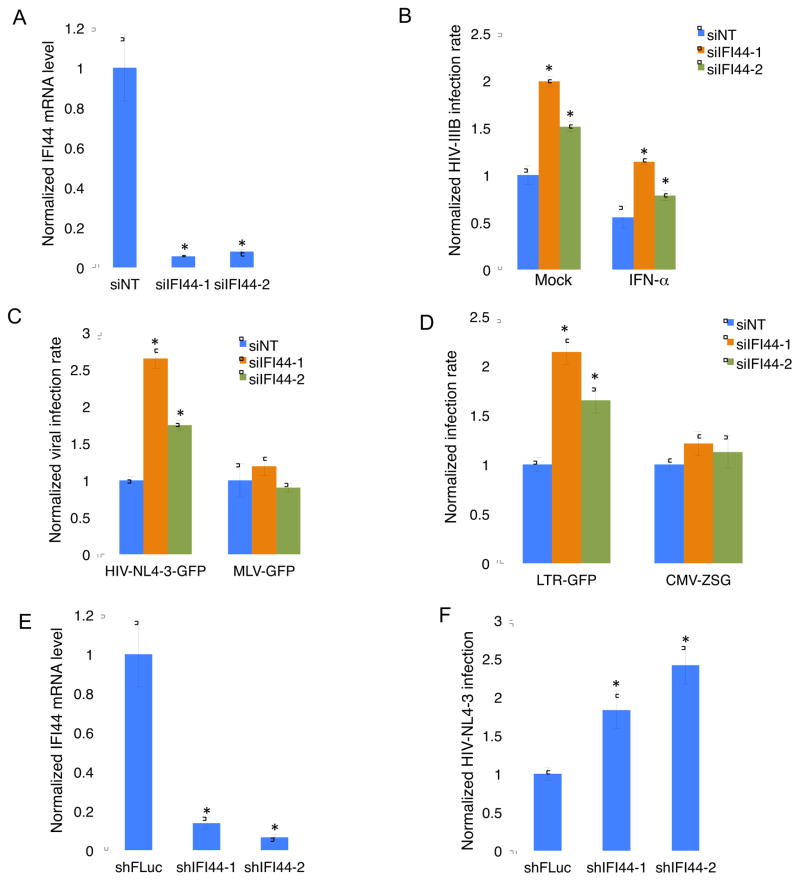Figure 1.
IFI44 depletion by RNAi increases HIV-1 infection. (A). MAGI-HeLa was transfected with sequence-unique IFI44 siRNA, siIFI44-1 or siIFI44-2, or non-targeting control siRNA (siNT). 72 hours post-transfection, total RNA was extracted for reverse transcription and quantitative real-time PCR to measure the IFI44 mRNA level. Data were normalized to the siNT-treated cells. (B). MAGI-HeLa was transfected with siIFI44-1, siIFI44-2, or non-targeting siNT. 48 hours post-transfection, cells were treated with IFN-α, or mock treated for 24 hours. Cells were then infected with HIV-IIIB wild-type viruses for 48 hours, and stained with anti-HIV-1 p24 CA antibody (anti-CA) and a FITC anti-mouse secondary antibody. Nuclei were stained using Hoechst. The percentage of infected cells was measured and normalized to the siNT-treated cells. (C, D). MAGI-HeLa was transfected with siIFI44-1, siIFI44-2, or siNT. 72 hours post-transfection, cells were infected with VSV-G pseudo-typed (C) HIV-NL4-3-GFP [Δ Env] or MLV-GFP virus [Δ Env], or (D) LTR-GFP or CMV-ZSG lentivirus for 48 hours. Cells were stained with Hoechst and the percentage of GFP-positive cells was measured and normalized to the siNT-treated cells. (E). Sequence-unique IFI44 shRNA, shIFI44-1, shIFI44-2, or control firefly luciferase shRNA (shFLuc) in pAPM vector was transduced in Jurkat T cells. Cells were subjected to RNA extraction, reverse transcription, and quantitative real-time PCR for measuring the IFI44 mRNA level. Data were normalized to the shFLuc-transduced cells. (F). Jurkat T cells stably expressing shIFI44-1, shIFI44-2, or shFLuc were infected with VSV-G pseudo-typed HIV-NL4-3-GFP [Δ Env] viruses for 48 hours. Cells were assessed using flow cytometry and the percentage of GFP-positive cells were calculated and normalized to the shFLuc-transduced cells. All results were presented as mean ± s.d. (n = 3); * P < 0.05 from t-test.

